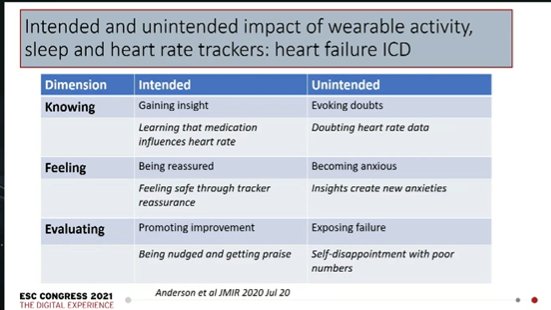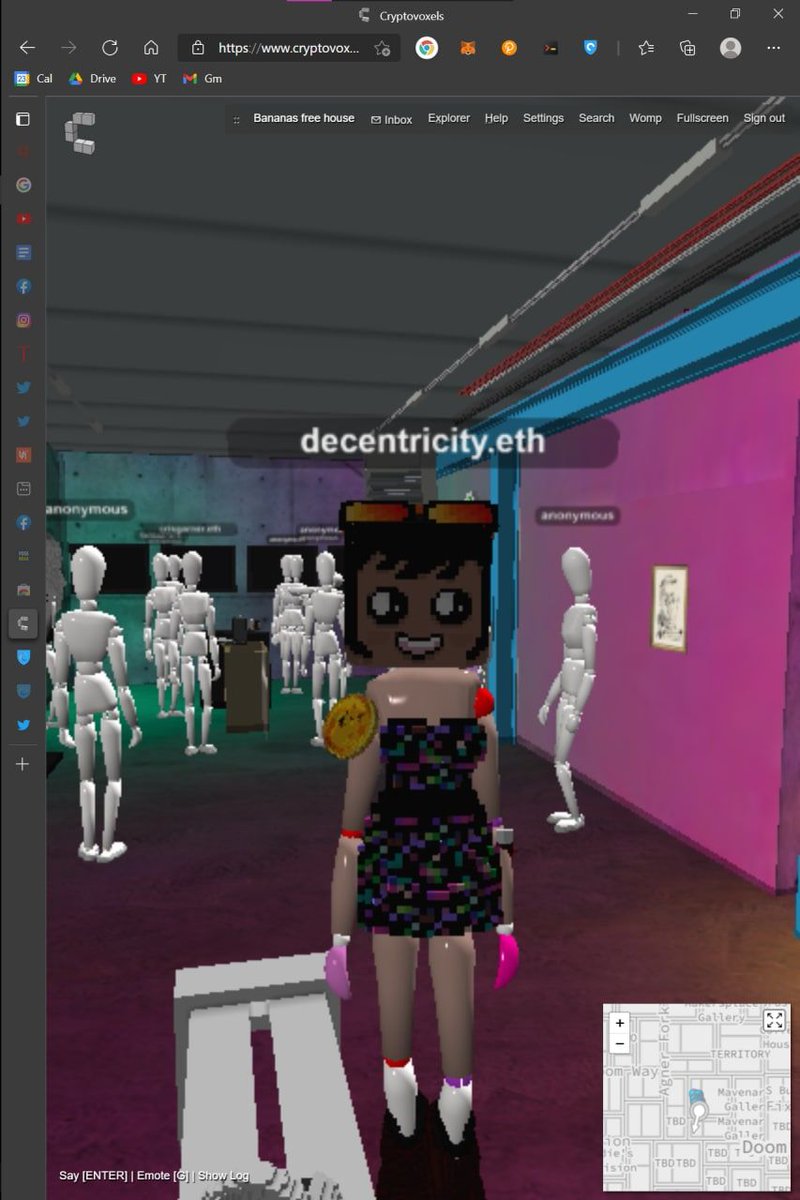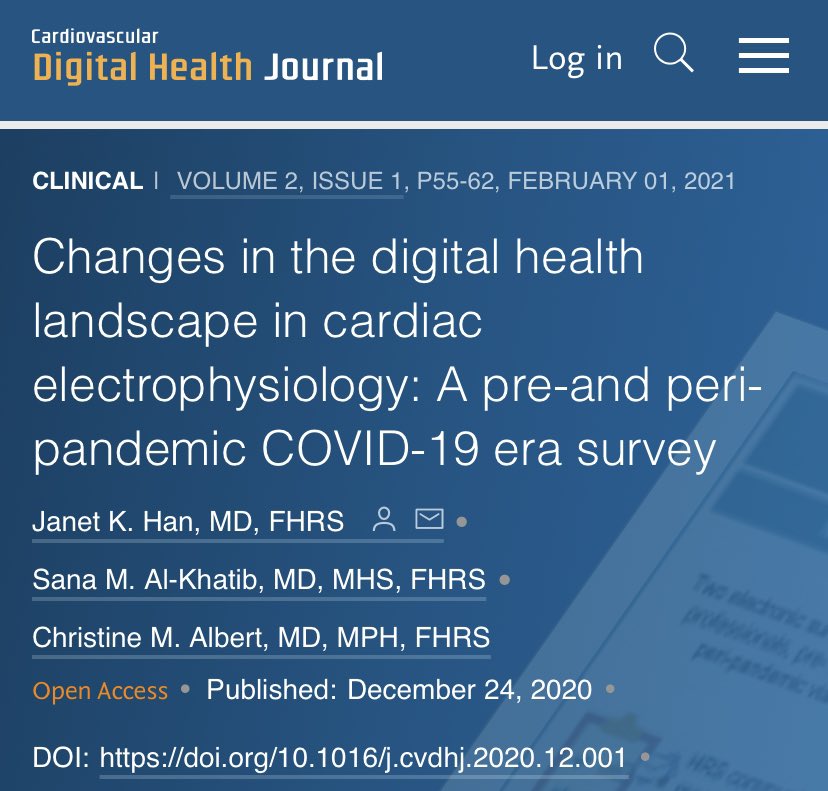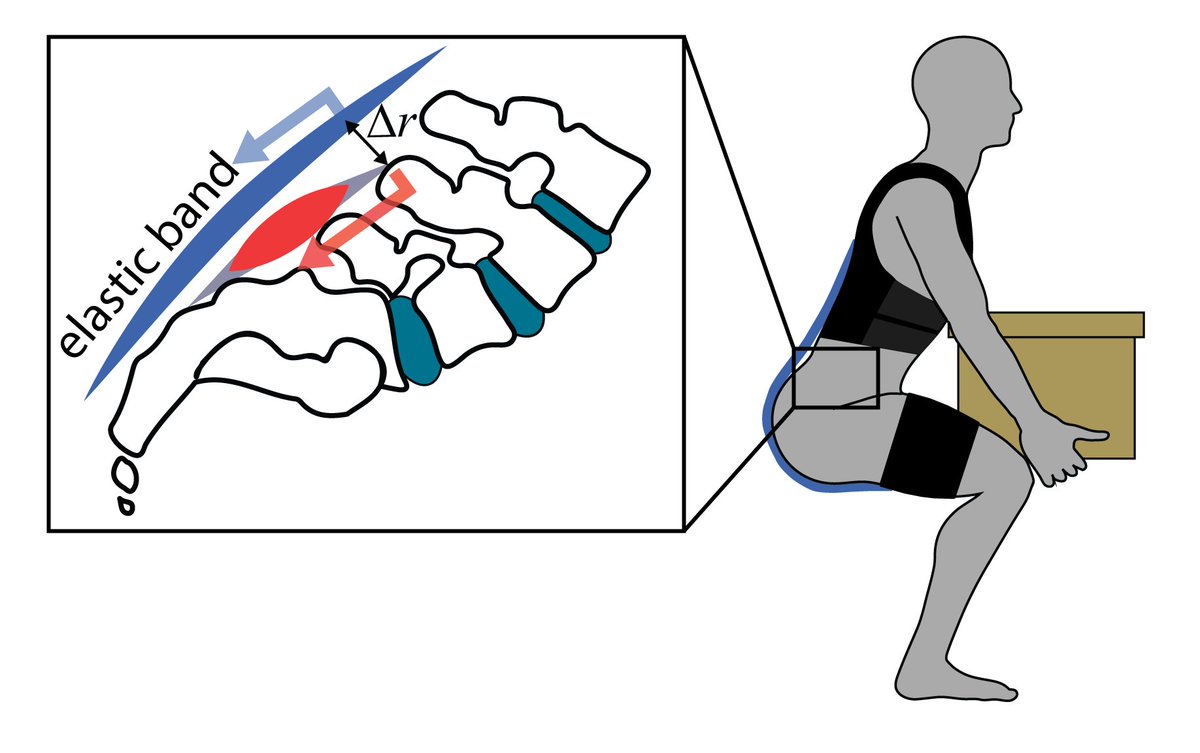Discover and read the best of Twitter Threads about #wearables
Most recents (23)
Exoskeletons in construction:
Nice article posted to the Associated Builders & Contractors of Wisconsin website & co-written by Prof. Zhenhua Zhu from UW-Madison & Mariya Sorenson, a construction manager with M.A. Mortenson.
They highlight 3 potential broad impacts of exos:
Nice article posted to the Associated Builders & Contractors of Wisconsin website & co-written by Prof. Zhenhua Zhu from UW-Madison & Mariya Sorenson, a construction manager with M.A. Mortenson.
They highlight 3 potential broad impacts of exos:

1. Improving worker safety & fostering a better safety culture in the construction industry.
Exoskeletons can reduce fatigue, muscle strain & wear-and-tear injuries, which could lead to substantial cost savings.
Exoskeletons can reduce fatigue, muscle strain & wear-and-tear injuries, which could lead to substantial cost savings.
2. Alleviating the shortage of skilled construction workers.
Exoskeletons could help extend careers & attract candidates who might otherwise be deterred by physically demanding jobs.
Exoskeletons could help extend careers & attract candidates who might otherwise be deterred by physically demanding jobs.
🚀 5 years ago, I stumbled—somewhat unexpectedly—into the world of tech translation, commercialization & startups. It's been a wild & enriching adventure!
👨🏾🔬 As a scientist-turned-entrepreneur, this journey opened my eyes to the business world.
But...
👨🏾🔬 As a scientist-turned-entrepreneur, this journey opened my eyes to the business world.
But...
😡 Amidst all the positive learning & growth, there's one thing that truly gets under my skin: misleading marketing & unsubstantiated claims.
😬 Brace yourself: The wearable & assistive tech industry (think #exoskeletons, #prosthetics, sensors) is still plagued by this problem! Whether it's in clinical, occupational, sport, or recreational applications, we need to address it head-on.
Now...
Now...
📢 We are proud to announce our @upgradinghealth is the third incubated project to join our program!
We believe that UpgradeHealth's innovative approach to digital health will revolutionize the way people manage their health and wellness.
🧵👇
#MultiversX #SeedCaptain #CTP
We believe that UpgradeHealth's innovative approach to digital health will revolutionize the way people manage their health and wellness.
🧵👇
#MultiversX #SeedCaptain #CTP

2/We're excited to work with Upgrade Health and support their mission of empowering individuals to live healthier lives 💚
They combine advanced analytics, motivational psychology & financial incentives to empower users to take charge of their health & well-being in the web3 era
They combine advanced analytics, motivational psychology & financial incentives to empower users to take charge of their health & well-being in the web3 era
3/ 🦾By leveraging wearables and tracking devices, the app generates a digital twin of the user's health data, and with help of machine learning algorithms is provides personalized insights and recommendations.
#Wearables #itheum
#Wearables #itheum
Wanna know bout the effect on national security & global stability of #QuantumHacking in #Web3 #Crypto #AI #VR & #AR by nation-state-backed hacker groups like #USCyberCommand, #NorthKorea, #Iran, #Russia, & #China?
You do? Here's you're TL;DR to minimize your Units of Attention
You do? Here's you're TL;DR to minimize your Units of Attention
APT (Advanced Persistent Threat) groups are a prime example of nation-state-backed hacker groups
#CozyBear (APT29), #LazarusGroup (APT38), #DoubleDragon (APT41), #FancyBear (APT28), and #HelixKitten (APT34) are some of the most well-known APT groups
#CozyBear (APT29), #LazarusGroup (APT38), #DoubleDragon (APT41), #FancyBear (APT28), and #HelixKitten (APT34) are some of the most well-known APT groups
These groups have been known to carry out cyber espionage, intellectual property theft, and sabotage. For instance, the #FancyBear APT group was responsible for the alleged 2016 US election interference
1/ Curious about biohacking your blood sugar? We were too! Check out our new @NorthwellHealth @lenoxhill study, published today in @FrontNutrition #tweetorial 🧵
frontiersin.org/articles/10.33…
frontiersin.org/articles/10.33…
2/ There’s been a buzz about glucose tracking and how glucose levels can help us understand our health and metabolic response to the foods we eat
3/ Unfortunately, the science behind the buzz is limited. To add some perspective, we designed a prospective observational pilot study including non-diabetic participants with and without obesity to study the clinical utility of #ContinuousGlucoseMonitoring
I wish I learned this tip earlier in my career:
👉🏽 If you do R&D on wearable or assistive tech, wear/use prototypes regularly in your daily life. It helps empathize with end users. And improves your ability to design and test for usability & practicality.
Here's why (brief 🧵)
👉🏽 If you do R&D on wearable or assistive tech, wear/use prototypes regularly in your daily life. It helps empathize with end users. And improves your ability to design and test for usability & practicality.
Here's why (brief 🧵)
1. It builds your intuition.
In retrospect, this tip seems obvious. But most researchers & developers don't do it. It took me >10 years of biomedical R&D to realize it.
Once I did, it transformed how I evaluate and develop new #exoskeletons, #prosthetics, #bionics & #wearables
In retrospect, this tip seems obvious. But most researchers & developers don't do it. It took me >10 years of biomedical R&D to realize it.
Once I did, it transformed how I evaluate and develop new #exoskeletons, #prosthetics, #bionics & #wearables
2. It provides clarity.
You'll notice design constraints you never knew existed. You'll think more deeply about user experience. And you'll create better lab and field evaluations more quickly.
It helps preempt fatal flaws before you start any serious design or testing work.
You'll notice design constraints you never knew existed. You'll think more deeply about user experience. And you'll create better lab and field evaluations more quickly.
It helps preempt fatal flaws before you start any serious design or testing work.
Some examples of intended and unintended impact of wearables #ESCDigitalSummit @escardio by Robyn Gallagher 







Für das Projekt @GesundeP
von @bvmd_de
@HashtagGesund
, @BlaupauseGesund
, @bphd_ev
haben wir uns mit den Antworten der #Parteien zum Thema #Digitalisierung befasst und diese eingeordnet.
Hier der Link gesundepolitik.de/index.php/digi…
die Einordnung findet ihr im Thread!
Let's go!
von @bvmd_de
@HashtagGesund
, @BlaupauseGesund
, @bphd_ev
haben wir uns mit den Antworten der #Parteien zum Thema #Digitalisierung befasst und diese eingeordnet.
Hier der Link gesundepolitik.de/index.php/digi…
die Einordnung findet ihr im Thread!
Let's go!
Als erstes eine gute Nachricht: alle Parteien sehen die #Digitalisierung des #Gesundheitssystems als wichtig und nötig an.
1/ Has the #Metaverse "Devolved"?
Me in the @SecondLife #Metaverse in 2013 vs me in the @cryptovoxels Metaverse in 2021. People sometimes ask me why the 2013 Metaverses "look better". I have an answer for these people and it's gonna take several tweets, bear with me...

Me in the @SecondLife #Metaverse in 2013 vs me in the @cryptovoxels Metaverse in 2021. People sometimes ask me why the 2013 Metaverses "look better". I have an answer for these people and it's gonna take several tweets, bear with me...


2/ A bit of history: #Metaverses were created whole-cloth from the novel Snow Crash, by Neal Stephenson. Active Worlds, which I actually tried (yes, I am that old) was fully based on that book's Metaverse, and provided the basis of all other Metaverses including @cryptovoxels...
3/ When it started, #Metaverses were totally separate and different from the concept of #onlinegames. The idea is to have more #socialimmersion and #userinteraction, not to have in-world goals to push the user in a direction...
El #grafeno es una #sustancia compuesta por #carbono puro, con átomos organizados en un patrón regular #hexagonal, parecido al grafito.
Es un material casi #transparente
#Graphene ☠️💉🧟♂️ #coronavirus
#Plandemia #Tecnología #AlMomento #Vaccine #5GLAB
#RetweeetPlease #RETWEEET #rt
Es un material casi #transparente
#Graphene ☠️💉🧟♂️ #coronavirus
#Plandemia #Tecnología #AlMomento #Vaccine #5GLAB
#RetweeetPlease #RETWEEET #rt
El #grafeno puede causar #daños a la #salud lo demostró la investigación en la #UniversidadBrown y resulta que es #altamente #nocivo para la salud, ya que es un material tan fino que es capaz de cortar directamente las #células si logra entrar en el #cuerpohumano
#RetweeetPlease
#RetweeetPlease
El #grafeno es un #nanomaterial "BIDI_MENSIONAL" que ofrece una gran oportunidad para desarrollar y mejorar los productos, permite crear nuevas conectividades al Internet los #wearables al #5gtechnology
#Graphene #nanotechnology
#SiguemeYTeSigo #RetweeetPlease
#FolloForFolloBack
#Graphene #nanotechnology
#SiguemeYTeSigo #RetweeetPlease
#FolloForFolloBack
Misplaced #petchip owner details—worrying, right?
But it might be more important to consider what your #pet #technology does with you & your pet's data by design—it might surprise you!
a thread on our research into 🐕🐈tech & #privacy implications:
1/x
bbc.co.uk/news/technolog…
But it might be more important to consider what your #pet #technology does with you & your pet's data by design—it might surprise you!
a thread on our research into 🐕🐈tech & #privacy implications:
1/x
bbc.co.uk/news/technolog…
We found that most pet wearables (activity/location trackers) capture far more data of owner than pet—and tend to be vague on what pet data they capture.
But... pet data indirectly reveals information about you, and is shared with health consortia!
2/x
doi.org/10.1109/MSEC.2…
But... pet data indirectly reveals information about you, and is shared with health consortia!
2/x
doi.org/10.1109/MSEC.2…
If you think data of your closest furry friend that you share your life with doesn't reflect you in detail, consider this: lots of people use dog activity trackers for joint human & doggie fitness—so your dog's activity might reveal about your health!
3/x
doi.org/10.1109/MC.201…
3/x
doi.org/10.1109/MC.201…
Officially official in the new issue of @CVDH_journal!
“Changes in the #digitalhealth landscape in cardiac electrophysiology: A pre- & peri-pandemic #COVID19 era survey”
Thanks to my #EPeeps #WomeninEP co-authors @CMAlbertEP & Sana Al-Khatib!)
cvdigitalhealthjournal.com/article/S2666-…

“Changes in the #digitalhealth landscape in cardiac electrophysiology: A pre- & peri-pandemic #COVID19 era survey”
Thanks to my #EPeeps #WomeninEP co-authors @CMAlbertEP & Sana Al-Khatib!)
cvdigitalhealthjournal.com/article/S2666-…


We did this study to see how #EPeeps were adapting #digitalhealth, #wearables #telehealth & #mApps use during #COVID19
There were 253 pre-pandemic & 273 f/u surveys completed.
Respondents were mostly:
👨🏻 <55yo
👩🏻⚕️👨🏻⚕️ physicians (85-88%)
🏥 Academic
bit.ly/3pOxhOq
There were 253 pre-pandemic & 273 f/u surveys completed.
Respondents were mostly:
👨🏻 <55yo
👩🏻⚕️👨🏻⚕️ physicians (85-88%)
🏥 Academic
bit.ly/3pOxhOq

The percentage of #EPeep self-identifying as #digitalhealth #innovators & early adopters significantly increased while early majority adopters decreased:
bit.ly/3pOxhOq
bit.ly/3pOxhOq

Occupational #wearables for monitoring low back load have potential to improve ergonomic assessments & enable personalized, continuous monitoring of overexertion injury risk in the workplace.
#biomechanics #ergonomics
Encouraged by what we discovered:
mdpi.com/1424-8220/21/2…
1/
#biomechanics #ergonomics
Encouraged by what we discovered:
mdpi.com/1424-8220/21/2…
1/
We wanted to know: if we can only use a small number of wearable sensors to monitor low back loading, then which sensors should we use, where should we place them, what type of algorithm should we employ, & how accurately can we monitor back loading during material handling?
2/
2/

To address this we synchronously collected data from the #biomechanics lab & from #wearables to analyze 10 individuals each performing 400 different material handling tasks. We explored dozens of candidate solutions that used IMUs on various body locations & pressure insoles.
3/
3/
Four years ago @leonscottmd asked if we could use #wearables to monitor & eventually reduce bone stress injury risks in runners. Based on our latest #biomechanics study I'm more & more convinced answer is going to be: Yes!
What we figured out so far:
authors.elsevier.com/c/1byHRcBxf01UA
1/
What we figured out so far:
authors.elsevier.com/c/1byHRcBxf01UA
1/
Here's a few things to discuss...
#1 what causes overuse injuries like stress fractures?
#2 how do current wearables assess injury risk?
#3 benefits of multi-sensor algorithms
#4 epidemiological evidence from occupational health suggests this approach can work
2/
#1 what causes overuse injuries like stress fractures?
#2 how do current wearables assess injury risk?
#3 benefits of multi-sensor algorithms
#4 epidemiological evidence from occupational health suggests this approach can work
2/
Two weeks in my @Levels program and have a bunch of tests & thoughts I'll share later but this was too interesting not to share now. Ate 3 pieces of pizza for dinner just to see what it did to my glucose... #wearables #metabolicfitness #metabolism #DigitalHealth
Initial response was not bad (relatively) for the first 3 hours - even got a score of 8 from @Levels but then it got interesting. Glucose continued to bounce and stay high for the next 7 (!) hours, well into my sleep... 



Glucose finally came down around 1AM - my sleep was terrible that night & @ouraring showed my HRV finally started going up (good) and resting HR came down (also good) right around 1AM, same time the glucose leveled... 



Excited to share our new #biomechanics publication on the effect of low-profile elastic #exosuits on back muscle fatigue. #exoskeleton #exosuit
nature.com/articles/s4159…
Challenging experiment, but we learned a lot in the process. Here are the top 4 lessons I took away....
1/
nature.com/articles/s4159…
Challenging experiment, but we learned a lot in the process. Here are the top 4 lessons I took away....
1/

First, huge kudos to lead author @lamers_erik who completed his PhD last month!
During his time @CREATEatVandy he completed a series of studies on quasi-passive wearable assistive devices spanning from foot prostheses to back-assist exosuits
Super proud of the work he did!
2/
During his time @CREATEatVandy he completed a series of studies on quasi-passive wearable assistive devices spanning from foot prostheses to back-assist exosuits
Super proud of the work he did!
2/
Next some background: When I talk to scientists they often want to know how much exosuits reduce muscle activity, or joint torque, or metabolic rate, or about the optimal assistance levels, specific design features, etc.
And I love this technical aspect of research, but...
3/
And I love this technical aspect of research, but...
3/
As its the first day of #WorldAlzMonth, I thought I'd give a brief overview of work I've done in collaboration with @BAM_Research.
My research focuses on improving how we diagnose and care for people with #dementia.
I use #gait analysis and #wearables to meet these aims (1/n).
My research focuses on improving how we diagnose and care for people with #dementia.
I use #gait analysis and #wearables to meet these aims (1/n).
My first step was to find out if people with #dementia have unique signatures of #gait impairment (i.e. Unique walking patterns).
My review revealed that gait may be useful to identify dementia but we didn't know enough about gait in dementia subtypes.
content.iospress.com/articles/journ…
My review revealed that gait may be useful to identify dementia but we didn't know enough about gait in dementia subtypes.
content.iospress.com/articles/journ…
With @BAM_Research, I set up the GaitDem study, which examined if #gait would be a useful marker for differential diagnosis of #Alzheimers disease and #Lewy body #dementia.
Using gold standard techniques, we found early evidence that gait may be useful.
sciencedirect.com/science/articl…
Using gold standard techniques, we found early evidence that gait may be useful.
sciencedirect.com/science/articl…
Whoop recently reported a "Novel Algorithm Capable of Identifying 80% of Symptomatic COVID-19 Cases" using #Wearables.
Interesting study. Glad they're exploring & sharing findings.
But what caught my eye were the low Sensitivity values reported in the study preprint...
1/
Interesting study. Glad they're exploring & sharing findings.
But what caught my eye were the low Sensitivity values reported in the study preprint...
1/

I'd love to get input/perspective from folks w/ experience/expertise in diagnostic & screening tests.
Thoughts? Comments? Implications of this level of Sensitivity?
Basically: Is the algorithm promising? Why or why not?
Here's link to preprint:
medrxiv.org/content/10.110…
2/
Thoughts? Comments? Implications of this level of Sensitivity?
Basically: Is the algorithm promising? Why or why not?
Here's link to preprint:
medrxiv.org/content/10.110…
2/
For those unfamiliar with Sensitivity and Specificity of diagnostic or screening tests, here's a nice 3-minute video introduction:
3/
3/
Thanks for all the great @BiomechanicsDay posts, videos & memories shared this week! Refreshing, energizing & inspiring! @CREATEatVandy & I posted on a few social media sites. Compiling here into #NBD2020 ode to #biomechanics! What biomech is to us...
1/
1/
#Biomechanics is about improving lives. Improving mobility & independence for those w/ disabilities. Preventing injury & sustaining health in others.
We aim to advance understanding of how people move, & translate science/engineering out of the lab.
2/
engineering.vanderbilt.edu/create/
We aim to advance understanding of how people move, & translate science/engineering out of the lab.
2/
engineering.vanderbilt.edu/create/
#Biomechanics is studying human movement and musculoskeletal loading to inform how we design #wearables, #exoskeletons and #exosuits to support and protect manual material handlers and other workers in physically demanding jobs.
@EmilyMatijevich @lamers_erik @volgy
3/
@EmilyMatijevich @lamers_erik @volgy
3/
Excited to share our #preprint entitled "Achieving drastically improved estimates of tibial bone force and damage during running using wearable sensors." Questions, comments & feedback welcomed.
osf.io/preprints/spor…
@EmilyMatijevich @leonscottmd
#wearables #biomechanics
1/
osf.io/preprints/spor…
@EmilyMatijevich @leonscottmd
#wearables #biomechanics
1/
@EmilyMatijevich @leonscottmd This is a follow up to our 2019 paper which raised concerns that common GRF, impact, load rate, acceleration & tibial shock metrics are often being misused & misinterpreted in scientific studies & commercial #wearables that seek to track injury risk.
journals.plos.org/plosone/articl…
2/
journals.plos.org/plosone/articl…
2/
@EmilyMatijevich @leonscottmd Here we share progress on using wearable sensors signals (from IMU + pressure insole), multi-sensor algorithms, physics-based #musculoskeletal modeling & machine learning to more accurately monitor tibial load, & expected bone microdamage due to this loading. #biomechanics
3/
3/

One of the most common questions I hear is: could occupational #exoskeletons cause muscle atrophy/loss? Interestingly I’ve never heard anyone ask: when workers develop overuse injuries (& miss work for days, end up immobilized for weeks, or leave) does it cause muscle atrophy?
1/
1/
I’m far more concerned about the latter scenario, which we know occurs regularly. Based on current scientific evidence, given the modest unloading provided by most #exoskeletons & #exosuits, & given the strenuous jobs done by industrial users, atrophy seems unlikely (imho).
2/
2/
Relevant excerpt from Krogh-Maden et al. in the Journal of Applied Physiology:
“...most literature suggests that reduced muscle loading must be drastic, such as limb immobilization or bed rest, to observe muscle atrophy."
physiology.org/doi/full/10.11…
3/
“...most literature suggests that reduced muscle loading must be drastic, such as limb immobilization or bed rest, to observe muscle atrophy."
physiology.org/doi/full/10.11…
3/
You go for a run down the street.
You feel the ground force on your feet.
You may think these reveal
The bone loads that you’ll feel,
But this thinking is just incomplete.
Read more in our #biomechanics pub. #running #stressfracture #wearables
tinyurl.com/y7qgjtkc
1/n
You feel the ground force on your feet.
You may think these reveal
The bone loads that you’ll feel,
But this thinking is just incomplete.
Read more in our #biomechanics pub. #running #stressfracture #wearables
tinyurl.com/y7qgjtkc
1/n
This paper reflects 2 years of fun, thought-provoking collaboration w/ @leonscottmd @EmilyMatijevich & Lauren B. The paper also benefited greatly from feedback & conversations on Twitter -- we even formally thanked the Twitterverse in Acknowledgements section -- so thank you! 2/n
@leonscottmd approached us a couple yrs ago asking if #wearables could be used to monitor & prevent bone stress fractures -- painful microcracks due to repeated bone loading -- in hopes of reducing the number of injured #runners showing up to his clinic each week. 3/n
Apple has a section of their website answering questions doctors may have regarding their latest #ECG technology. Where are the answers to the REAL questions #patients want to know about? For example, if I get an alert:
#AppleWatch #digitaltech #wearables #PatientAdvocacy
#AppleWatch #digitaltech #wearables #PatientAdvocacy
1) who do I call: my primary care physician (PCP), #cardiologist, or 911? #AppleWatch #digitaltech #digitalhealth #wearables #Innovation #PatientAdvocacy #healthcare #medtwitter
2) when do I confidently ignore, act upon, or wait to make actionable decisions about alerts I’ve received? #AppleWatch #digitaltech #digitalhealth #wearables #Innovation #PatientAdvocacy #healthcare #medtwitter






